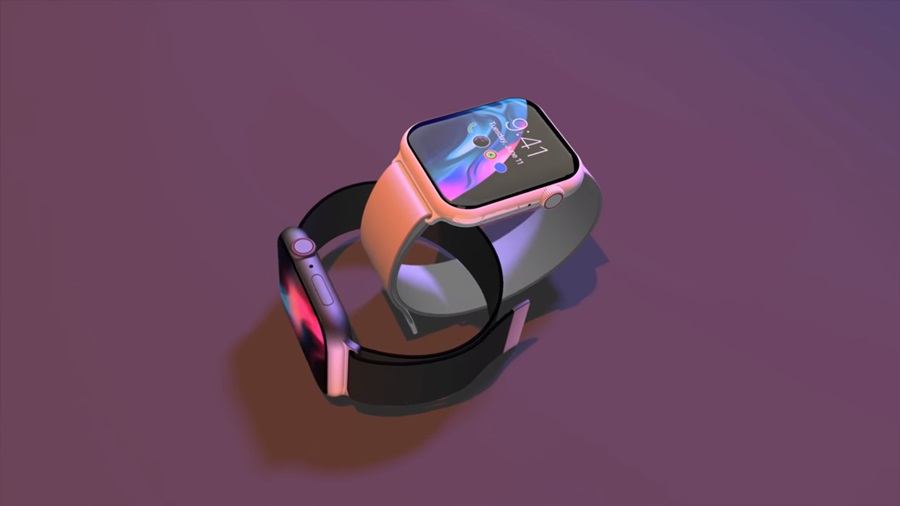The Apple Watch 5 is arguably the most anticipated piece of hardware that the Cupertino-based company will release this year. This isn’t surprising given that its predecessors made huge waves in the tech and health industry after they hit the market.
Now, the anticipation has grown further as the Apple Watch 5 will supposedly have the ability to identify certain smells. According to Inverse, a patent filing of the company hints at this feature, which will apparently be achieved by outfitting the device with an artificial intelligence engine.
The result would then allow the Apple Watch 5 to detect various odors and airborne chemicals, as well as a wearer’s sugar levels through their sweat. Of course, since nothing has been confirmed just yet, it’s best to file this one as a rumor for now. This is especially true since the patent filing stated that the feature will be given to “future Apple Watches.”
There’s no solid indication that it will definitely be given to the Apple Watch 5. The same goes for the supposed theft-proof feature of the device that has been reported last week. According to another patent filed by Apple, the wearable has been designed to have a multilayered authentication system that will identify if the person using the device is indeed its owner.
The system does this by analyzing a host of patterns found on the person’s wrist including pores, veins, artery, tendon, and several others. After inputting the data, the Apple Watch 5 will analyze the information and create a threshold that the user will go through in order to unlock the device.
Of course, other means of authentication will still be available to ensure that a user isn’t locked out if that particular system goes awry for some reason. Tracking a person’s sleeping pattern, hand gesture commands, blood glucose monitor, and blood pressure monitors are the other features touted to be included in the Apple Watch 5.
Regarding the device’s release date, Apple hasn’t announced anything yet. However, it’s pretty easy to predict when it will come out since all of its predecessors – barring the first variant – all came out in September.



 Intel’s Testing of China-Linked Chipmaking Tools Raises U.S. National Security Concerns
Intel’s Testing of China-Linked Chipmaking Tools Raises U.S. National Security Concerns  Moore Threads Stock Slides After Risk Warning Despite 600% Surge Since IPO
Moore Threads Stock Slides After Risk Warning Despite 600% Surge Since IPO  Trello Outage Disrupts Users as Access Issues Hit Atlassian’s Work Management Platform
Trello Outage Disrupts Users as Access Issues Hit Atlassian’s Work Management Platform  Australia’s Under-16 Social Media Ban Sparks Global Debate and Early Challenges
Australia’s Under-16 Social Media Ban Sparks Global Debate and Early Challenges  MetaX IPO Soars as China’s AI Chip Stocks Ignite Investor Frenzy
MetaX IPO Soars as China’s AI Chip Stocks Ignite Investor Frenzy  SpaceX Edges Toward Landmark IPO as Elon Musk Confirms Plans
SpaceX Edges Toward Landmark IPO as Elon Musk Confirms Plans  Apple App Store Injunction Largely Upheld as Appeals Court Rules on Epic Games Case
Apple App Store Injunction Largely Upheld as Appeals Court Rules on Epic Games Case  Microsoft Unveils Massive Global AI Investments, Prioritizing India’s Rapidly Growing Digital Market
Microsoft Unveils Massive Global AI Investments, Prioritizing India’s Rapidly Growing Digital Market  Trump’s Approval of AI Chip Sales to China Triggers Bipartisan National Security Concerns
Trump’s Approval of AI Chip Sales to China Triggers Bipartisan National Security Concerns  SK Hynix Considers U.S. ADR Listing to Boost Shareholder Value Amid Rising AI Chip Demand
SK Hynix Considers U.S. ADR Listing to Boost Shareholder Value Amid Rising AI Chip Demand  SpaceX Insider Share Sale Values Company Near $800 Billion Amid IPO Speculation
SpaceX Insider Share Sale Values Company Near $800 Billion Amid IPO Speculation  Amazon in Talks to Invest $10 Billion in OpenAI as AI Firm Eyes $1 Trillion IPO Valuation
Amazon in Talks to Invest $10 Billion in OpenAI as AI Firm Eyes $1 Trillion IPO Valuation  EU Court Cuts Intel Antitrust Fine to €237 Million Amid Long-Running AMD Dispute
EU Court Cuts Intel Antitrust Fine to €237 Million Amid Long-Running AMD Dispute  Adobe Strengthens AI Strategy Ahead of Q4 Earnings, Says Stifel
Adobe Strengthens AI Strategy Ahead of Q4 Earnings, Says Stifel  Nvidia Weighs Expanding H200 AI Chip Production as China Demand Surges
Nvidia Weighs Expanding H200 AI Chip Production as China Demand Surges  Australia Enforces World-First Social Media Age Limit as Global Regulation Looms
Australia Enforces World-First Social Media Age Limit as Global Regulation Looms  SoftBank Shares Slide as Oracle’s AI Spending Plans Fuel Market Jitters
SoftBank Shares Slide as Oracle’s AI Spending Plans Fuel Market Jitters 






























